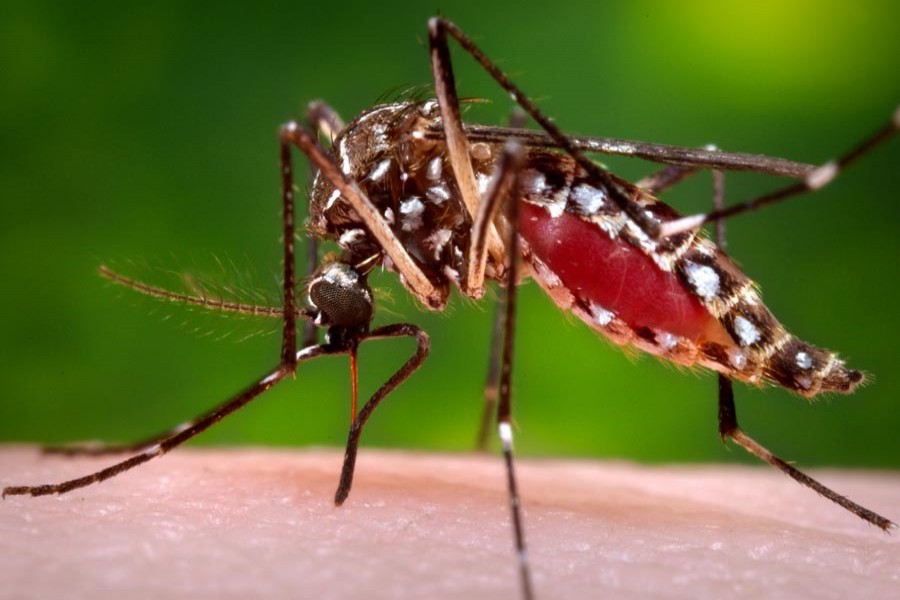Dengue season usually begins with June’s monsoon rains in Dhaka. An unavoidable fact of life, it proves deadly to a handful of unfortunate victims but by September it has mostly disappeared from the Bangladeshi capital, according to a report published on The Guardian.
But this year the disease has seen more than a tripling of numbers of recorded cases in the city – alongside a lengthening of its season.
And the explosion is being reported in other countries too. Dengue, a mosquito-borne viral disease, has been spreading rapidly in the past few years.
By mid-October, almost 7,450 cases of dengue had been reported in Bangladesh and 17 deaths (pdf), making it the deadliest year since the first recorded epidemic in 2000.
Last year, 68 dengue cases were recorded in Dhaka in the first four months, compared with 254 this year.
Researchers believe the true numbers are much higher. There are four strains of dengue, including the most life-threatening, hemorrhagic dengue. But only patients with severe cases end up in hospitals, from where the government collects data.
Dengue comes from the same female mosquitoes which transmit chikungunya, yellow fever and Zika infection, and is widespread throughout the tropics, influenced by rainfall, temperature and unplanned rapid urbanisation. All three risk factors are what is leading to an expansion of the dengue season in overcrowded cities such as Dhaka – with 20 million people, poor sanitation and pollution making it among the worst cities to live in.
The dengue season is getting longer, thanks to poor urban planning and healthcare in a rapidly growing city.
“The majority of cases used to be seen between June and September,” says Dr Rashidul Haque, an expert in infectious diseases from the International Centre for Diarrhoeal Disease Research, Bangladesh (ICDDR,B).
“But more and more we are seeing cases earlier in the year, and later through to November and December.”
Economic growth, as much as population growth, may also be creating problems. Bangladesh is a fast growing economy, and Dhaka the hub. Hasty building of high-rise business centres, hotels and apartment blocks has seen the destruction of some of the few municipal housing projects, pushing occupants out into the already overcrowded slums.
It has also turned much of the city into a vast building site, with barrels of stagnant water or reservoirs. When it rains in Dhaka, the water stays pooled on the concrete surfaces.
The Aedes mosquito thrives in wet conditions. It can lay its larvae in just a few centimetres of water. People living in the city’s slum areas store drinking water in open buckets and live in close proximity to sewage, creating perfect conditions for the disease to spread. In one zone of the city in July, Dhaka South City Corporation found that of 2,599 constructions sites, 938 had infestations of Aedes.
Singapore has also seen soaring numbers of dengue cases, which studies have linked to the city’s growing population and construction sites. The rise was followed by a swift response from the Singaporean government targeting such sites.
In Sri Lanka the government has created a special taskforce for dengue prevention. This includes monitoring where the larvae are found and exterminating them.
The Bangladeshi government has no such action plan. “The city corporations spray the streets with insecticide but it isn’t really effective,” says Emranul Haq, consortium manager for urban health at the NGO Concern Worldwide, Bangladesh.
Haque says that spraying, or “fogging” as it is known, is unlikely to have much impact since it targets adult mosquitos. “Killing the larvae is far more important,” he says. Worryingly, he adds, the mosquitos have become resistant to the type of insecticide used. “It’s almost entirely useless.”
“They just spray the insecticide to look like they’re active,” says Haq. When it comes to an emergency, the main response is a “blame game”. “The city corporations say they need help from the ministry of health while the ministry says it’s their [the city corporations’] responsibility.”
Part of the problem is Bangladesh’s parallel healthcare systems. Rural areas fall under the responsibility of the central government’s ministry of health. Urban areas are serviced by the city corporations. The government has invested a lot in rural healthcare, in part to stop rural-urban migration. The result is dangerously neglected urban healthcare with the poor particularly vulnerable.
“City corporations don’t have sufficient clinics or doctors and healthcare workers to staff them,” says Haq. They used to rely on “money from the World Bank and others,” but now this is drying up.
In rural Bangladesh there is a greater chance of bringing disease outbreaks under control thanks to the well-structured healthcare system. Rich urbanites will go to private hospitals. Poor city-dwellers have only chaotic public hospitals or “they become their own doctors,” says Haq, buying medicines from unregulated pharmacies.
There is a glimmer of hope on the horizon. The ICDDR,B is leading a dengue vaccine trial in Mirpur, north of Dhakar, which holds promise, says Haque, who is leading the trial. In the meantime, the city needs to be braced for more infection and deaths.


